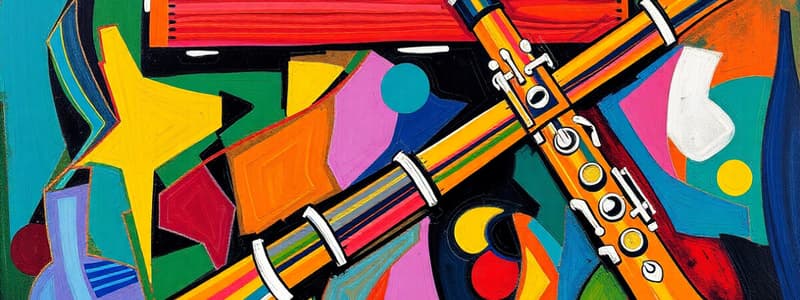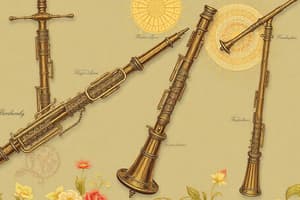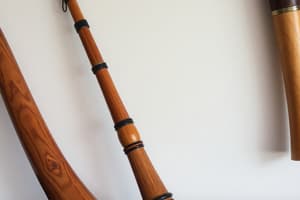Podcast
Questions and Answers
Which component of the clarinet is responsible for creating sound upon the player's involvement?
Which component of the clarinet is responsible for creating sound upon the player's involvement?
- A vibration plate
- A single reed of cane (correct)
- A double reed of bamboo
- A set of bellows
What differentiates the harmonica from other wind instruments in terms of sound production?
What differentiates the harmonica from other wind instruments in terms of sound production?
- The use of bamboo pipes
- A double reed mechanism
- Free-vibrating metal reeds (correct)
- A set of vibrating strings
Which cultural belief is associated with the nose flute?
Which cultural belief is associated with the nose flute?
- It purifies the air
- It channels spirits of ancestors
- It is believed to bring rain
- The breath from the nose is purer than the mouth (correct)
What role does the length of the tube play in wind instruments?
What role does the length of the tube play in wind instruments?
In which musical style is the accordion particularly prominent?
In which musical style is the accordion particularly prominent?
Which wind instrument is shaped to resemble a mythical creature?
Which wind instrument is shaped to resemble a mythical creature?
Why is the harmonica significant in American folk music?
Why is the harmonica significant in American folk music?
What is a significant characteristic of the sheng?
What is a significant characteristic of the sheng?
Flashcards
Aerophones
Aerophones
Instruments played by blowing air into or across them.
Pitch
Pitch
The perceived frequency of a sound, determined by tube length and holes.
Harmonica
Harmonica
A free-reed wind instrument played by blowing or sucking air across holes.
Clarinet
Clarinet
Signup and view all the flashcards
Nose Flute
Nose Flute
Signup and view all the flashcards
Accordion
Accordion
Signup and view all the flashcards
Sheng
Sheng
Signup and view all the flashcards
Reed Plate
Reed Plate
Signup and view all the flashcards
Study Notes
World of Wind Instruments
- Wind instruments, or aerophones, come in a wide variety, from prehistoric flutes to modern instruments.
- The pitch of a note on a wind instrument is determined by the length of the tube and the number of open holes.
- Prehistoric instruments were made from animal bones or hollow plants.
Harmonica
- A 19th-century instrument, used in blues, American folk music, and jazz.
- Air blown and sucked across holes causes the vibrating reed plates to make sound.
Clarinet
- Uses a single cane reed inserted into a metal mouthpiece holder.
- The reed vibrates, causing the air inside the tube to make sound when the player's mouth overlaps the reed.
Nose Flute
- Used by some Pacific Island communities.
- Believe breath from nose is purer than mouth.
- Often accompanies songs and chants.
Sheng
- A Chinese bamboo pipe instrument dating back to before 500 BCE.
- Its design is shaped like a mythical phoenix.
- The sound is meant to imitate the cry of a phoenix.
Accordion
- A 19th-century handheld instrument.
- Produces sound by using steel reeds that vibrate when air is pushed through bellows.
- Used in folk music.
Studying That Suits You
Use AI to generate personalized quizzes and flashcards to suit your learning preferences.




